
Josef Gočár was a Czech architect. He was one of the founders of modern architecture in Czech Republic.

The National Gallery Prague, formerly the National Gallery in Prague, is a state-owned art gallery in Prague, which manages the largest collection of art in the Czech Republic and presents masterpieces of Czech and international fine art in permanent and temporary exhibitions. The collections of the gallery are not housed in a single building, but are presented in a number of historic structures within the city of Prague, as well as other places. The largest of the gallery sites is the Trade Fair Palace, which houses the National Gallery's collection of modern art. Other important exhibition spaces are located in the Convent of St Agnes of Bohemia, the Kinský Palace, the Salm Palace, the Schwarzenberg Palace, the Sternberg Palace, and the Wallenstein Riding School. Founded in 1796, it is one of the world's oldest public art galleries and one of the largest museums in Central Europe.

Václav Špála was a Czech painter, graphic designer and illustrator.
Emil Filla was a Czech painter. He was a leader of the avant-garde in Prague between World War I and World War II and was an early Cubist painter.

František Langer was a Czech playwright, screenwriter, essayist, literary critic, publicist and military physician.

Czech Cubism was an avant-garde art movement of Czech proponents of Cubism, active mostly in Prague from 1912 to 1914. Prague was perhaps the most important center for Cubism outside Paris before the start of World War I.
Alexandr Vladimír Hrska was a Czech painter, graphic designer, and scenographer.
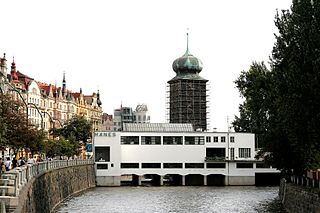
The Mánes Association of Fine Artists was an artists' association and exhibition society founded in 1887 in Prague and named after painter Josef Mánes.

Marie Magdalena Františka "Meda" Mládková was a Czech art collector. Her husband, Jan Viktor Mládek (1911–1989), was an economist and a governor of the IMF. Having spent several years in exile, she returned to Czechoslovakia after the Velvet Revolution of 1989.
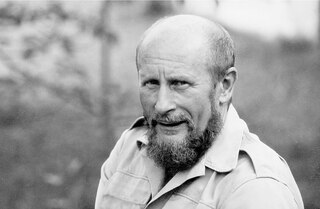
Pavel Nešleha was a Czech painter, draughtsman, printmaker, photographer and creator of light objects. He received a number of important awards for his graphic and drawing work. He has exhibited individually since 1967 and participated in collective exhibitions since 1965. After the Soviet occupation in August 1968 and during the subsequent normalization, he was not allowed to exhibit freely. During the communist regime he was a member of the informal groups "Somráci (Vagabonds)" and "Zaostalí ". After 1990 he was a professor of painting at the Academy of Arts, Architecture and Design in Prague.
Oldřich Lajsek was a Czech painter, designer, graphic artist and teacher of arts. He became a member of the Union of Czechoslovak Creative Artists in 1954. He was the head of an artistic society named The Group of Eight Artists. In 1985, he was awarded the national honor For Excellent Work. During his life, he created over 3000 productions of which more than 1800 went to private collections.
Ludvík Kundera was a Czechoslovak musicologist, pianist and academic administrator.
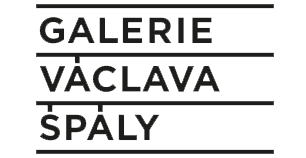
The Václav Špála Gallery is a Prague gallery of mostly contemporary art. It is located at no. 59/30 Národní třída, in the New Town of Prague. The gallery holds exhibitions particularly of works by living Czech professional artists of the middle generation who are among the best painters, photographers, and sculptors on the art scene today. The exhibitions regularly alternate between works of painting, photography, and sculpture.
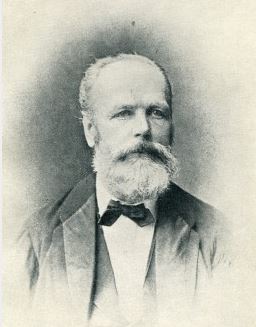
František Čermák was a Czech painter, art professor and rector at the Academy of Fine Arts, Prague. He is primarily known for historical genre scenes.
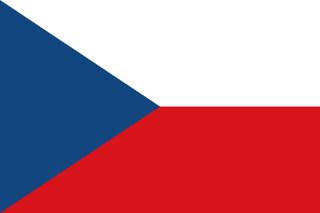
Czech architecture, or more precisely architecture of the Czech Republic or architecture of Czechia, is a term covering many important historical and contemporary architectural movements in Bohemia, Moravia, and Silesia. From its early beginnings to the present day, almost all historical styles are represented, including many monuments from various historical periods. Some of them are UNESCO World Heritage Sites.
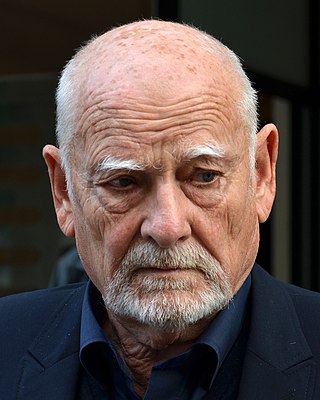
Theodor Pištěk is a Czech painter, costume designer, set designer and former racing driver. His costume designs and film sets are internationally acclaimed. He won an Oscar for his costumes for Amadeus, directed by Miloš Forman. For Forman’s next film, Valmont, Pištěk won a César Award and was nominated for an Oscar. In 2003 he received the Czech Lion Award for Unique Contribution to Czech Film, in 2013 he was awarded the Crystal Globe for Outstanding Artistic Contribution to World Cinema, and in 2017 he received the Golden Slipper for Outstanding Contribution to Films for Children and Young People.

Karel Pauzer is a Czech sculptor, ceramist, painter, printmaker and restorer.

Jan Hendrych is a Czech sculptor, painter, restorer, curator and professor emeritus at the Academy of Fine Arts in Prague.

René Roubíček was a Czech glass artist, designer, painter, musician and teacher. He was one of the leading figures of 20th century world art glass. As a teacher at the Vocational Glass School in Kamenický Šenov, an artist at the Vocational Glass School in Železný Brod and the head artist of the Borské sklo company, he was at the birth of Czech studio glass.

Vladimír Janoušek was a Czech sculptor and painter. He was founding member of the UB 12 group and husband of the sculptor Věra Janoušková. In the 1960s he was a sought-after collaborator of architects. Janoušek almost never abandoned figuration, but the moving parts of his sculptures represent a radicalisation of form that breaks away from the traditional concept of sculpture. The originality and conceptual approach gives his sculpture a European significance. He is one of the few Czech sculptors listed in the New Dictionary of Modern Sculpture, published in Paris in 1970. After Warsaw Pact invasion of Czechoslovakia and so called normalization he lost the possibility to exhibit and became one of the most persecuted Czech artists.




















